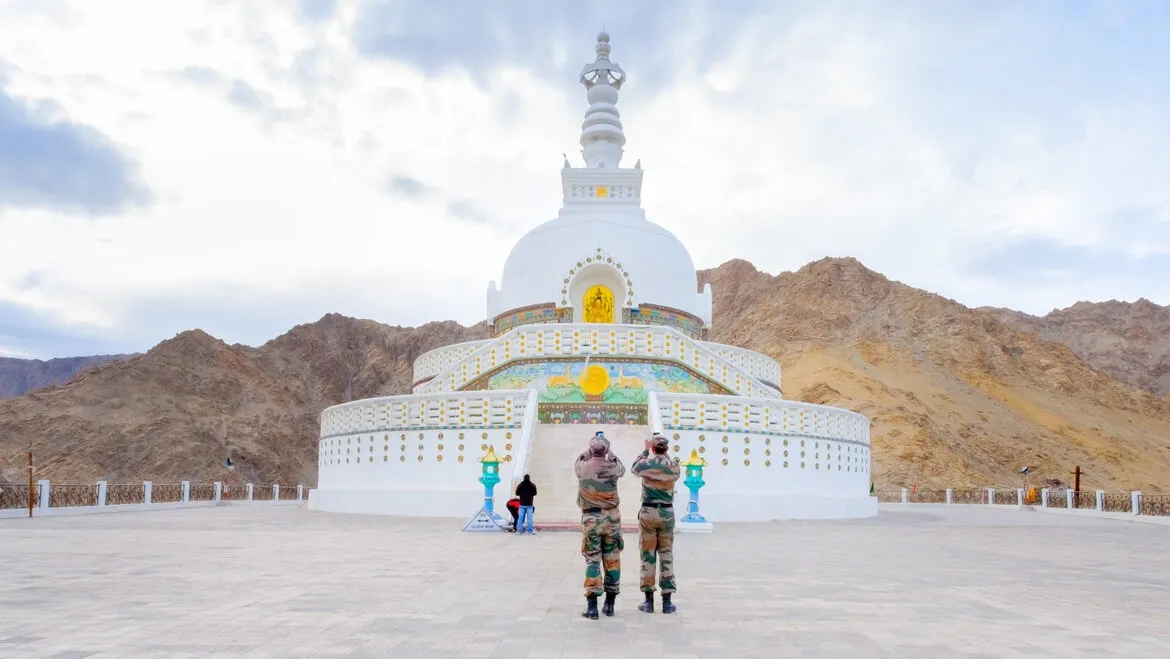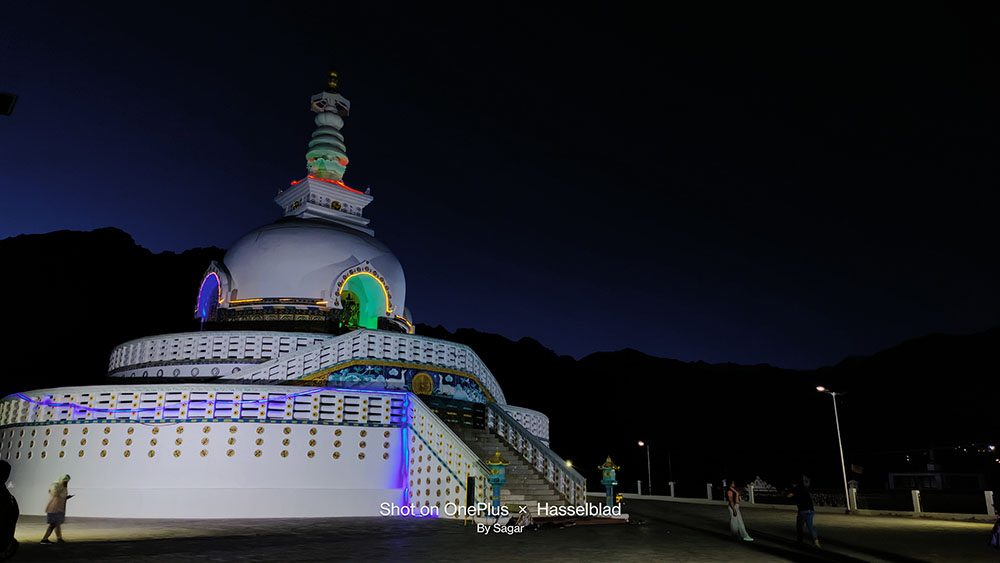🌌 Stargazing in Ladakh 2025: Best Spots, Milky Way Views & Shanti Stupa Night Magic
Imagine lying on your back under an endless sky, the silence of the Himalayas wrapping around you like a soft blanket, and above — a canopy of stars so vivid you feel like you could reach out and touch the Milky Way. That’s the magic of stargazing in Ladakh — an experience that turns your journey into the cosmos itself.
If you’re planning a trip to Ladakh, don’t just pack trekking shoes and prayer flags — pack your curiosity for the universe. Because Ladakh, with its high altitude, dry air, and minimal light pollution, is one of the best places in the world for stargazing.
In this guide, we’ll take you through the top stargazing locations, ideal times to spot the Milky Way, travel tips, gear suggestions, and a bonus feature on the spiritual beauty of Shanti Stupa in Ladakh, which transforms into a beacon of serenity after sunset.
🌠 Why Stargazing in Ladakh Is World-Class
Ladakh’s sky isn’t just dark — it’s ink-black, uninterrupted, and infinite. Located at altitudes between 9,000 and 18,000 feet, with some of the cleanest air on Earth, the night skies here offer visibility like nowhere else in India.
Here’s why Ladakh is a stargazer’s dream:
-
High Altitude = thinner air + clearer skies
-
Dry Climate = fewer clouds
-
Remote Locations = near-zero light pollution
-
Geographic Latitude = perfect for Milky Way visibility
🌌 Best Time for Stargazing in Ladakh
-
Ideal Months: May to September (clear skies, warmer nights)
-
Milky Way Season: April to August (visible after sunset)
-
Avoid: Monsoon months in lower altitudes (July in Manali), and December–February due to freezing temps and cloudier skies
🗺️ Top 7 Places for Stargazing in Ladakh
1. Hanle Village
-
Home to the Indian Astronomical Observatory
-
4,500 meters above sea level
-
Certified Dark Sky Reserve (India's first)
-
Stay in basic homestays or eco-lodges
Best For: Astrophotography, telescope observation, raw stargazing
2. Nubra Valley
-
Especially Turtuk and Hunder villages
-
Milky Way visible with the naked eye
-
Quiet, cold, and remote
Best For: Silence, unspoiled horizons
3. Pangong Lake
-
Clear reflections of stars on water
-
Visible Milky Way arc around 10 PM
-
Carry extra blankets — nights are freezing even in summer
Best For: Romantic stargazing, surreal lake-side shots
4. Tso Moriri Lake
-
Higher than Pangong, lesser crowd
-
Excellent for astrophotography and long-exposure shots
-
Minimal human activity = perfect darkness
Best For: Photographers, solitude seekers
5. Lamayuru
-
Moonland-like terrain + monastic silence
-
Wide open skies, great altitude
-
Known for annual star parties and astro retreats
Best For: Spiritual-seekers and photographers
6. Alchi Village
-
Lower altitude but excellent visibility
-
More amenities available
-
Combine with monastery visits and riverside stays
Best For: Comfort + easy access
7. Leh City Outskirts (Shanti Stupa, Magnetic Hill)
-
Less remote, more accessible
-
Still great for casual stargazers
-
Perfect if you don’t want to travel far
Best For: Beginners, short trips, couples
🔭 What to Carry for Stargazing in Ladakh
-
DSLR/ Mirrorless camera with tripod (for long exposure)
-
Wide-angle lens (14mm to 24mm)
-
Star-tracking app (SkyView, Stellarium, Sky Guide)
-
Warm clothes (thermals, wool socks, beanie)
-
Torch or headlamp (with red light mode)
-
Blanket or sleeping bag
-
Snacks and thermos flask with hot tea
Optional but fun: Portable telescope, drone (if permitted)
📸 Photography Tips
-
Use manual mode with a shutter speed of 15–25 seconds
-
Set ISO to 1600–3200 depending on light conditions
-
Use a remote shutter or 2-second timer to avoid shake
-
Focus manually to infinity
-
Shoot in RAW for better editing flexibility
-
Best time: 10 PM to 3 AM when the sky is darkest
✨ Bonus: Night Views at Shanti Stupa in Ladakh
By day, it stands tall in white against a deep blue sky — but by night, Shanti Stupa in Ladakh transforms into a glowing guardian watching over Leh.
🏯 What is Shanti Stupa?
Built in 1991 by Japanese monks, it is a symbol of peace and Buddhism, housing relics of the Buddha. It offers panoramic views of Leh city and the Stok range.
🌌 Shanti Stupa at Night
-
Illuminated by soft white and golden lights
-
Great spot for Leh city nightscape photography
-
Watch the moon rise over the mountains
-
Ideal for quiet meditation under stars
Tip: Visit around 8 PM — lesser crowd and peaceful vibes.
🧘♀️ Couple’s Corner: Romantic Stargazing Spots
-
Pangong Lake Campsite: Lay under a blanket with the stars reflecting off the lake
-
Turtuk Sand Dunes: Build a campfire and share stories
-
Shanti Stupa Night Drive: Perfect night stroll post dinner
-
Hanle Observatory: Stargaze like scientists together!
🛏️ Where to Stay
In Leh:
-
The Grand Dragon Ladakh (luxury)
-
Shaolin Guesthouse (budget + terrace views)
-
The Zen Ladakh (mid-range, heated rooms)
At Hanle:
-
Astrostay Hanle (basic, but astronomer-guided)
-
Homestays with rooftop bedding available
At Pangong:
-
Camp Redstart
-
Pangong Retreat Camp
🧭 6-Day Suggested Itinerary for Stargazers
Day 1: Arrive in Leh → Rest & acclimatize
Day 2: Local Leh + Shanti Stupa at night
Day 3: Leh to Nubra → Night at Hunder
Day 4: Nubra to Pangong → Stargaze by the lake
Day 5: Pangong to Hanle → Observatory visit
Day 6: Return to Leh or head to Tso Moriri
⚠️ Things to Keep in Mind
-
Avoid light pollution — choose areas away from hotels and camps
-
Be respectful — locals sleep early, and wildlife may be nearby
-
Carry oxygen canisters if prone to AMS
-
Don’t attempt deep astrophotography without practice
-
Avoid drones in restricted areas
🪐 Final Thoughts
Stargazing in Ladakh is not just an activity — it’s a transcendent experience. You don’t just look at the stars, you feel their presence. You don’t just escape the city; you enter the cosmos.
Whether you're spotting constellations from Pangong, watching meteors fall over Hanle, or meditating under moonlight at Shanti Stupa in Ladakh, this journey will leave you changed.
So for your next trip to Ladakh, don’t just chase the mountains — chase the stars too.





Comments
Post a Comment